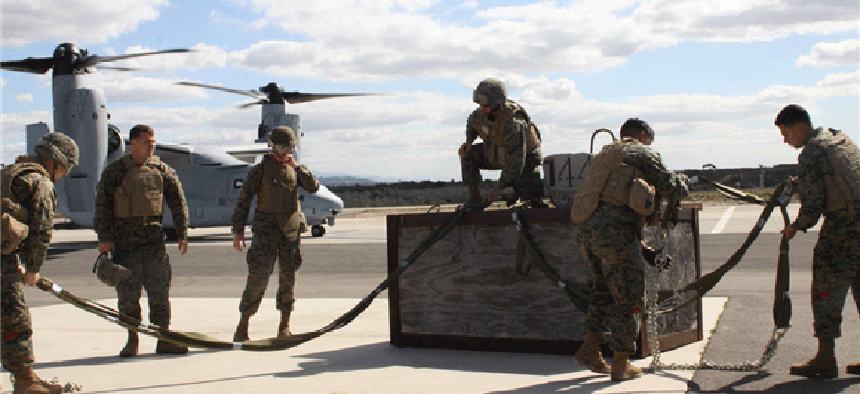Logistics takes the point with Marines' modernization

The U.S. Marine Corps uses federated cloud techniques to speed delivery of supplies to the front, sometimes shortening response to a matter of minutes.
Getting supplies to military units in a timely fashion has been the bête noir of armies for centuries. It’s even more critical today, when fighters at the forward edge of combat can be located anywhere and everywhere, and often invisible to logistical planners clicking away in the background.
The U.S. Marine Corps Global Combat Support System (GCSS-MC) has been working to change that situation with a system that uses a federated private cloud and data synchronization techniques to give all Marines — out to the tip of the spear — the same logistics capabilities they would have in their home garrisons.
Previously, a gunnery sergeant would order three or four times the number of parts he needed, because he didn’t have the kind of visibility into the requisition process to know where and when he would receive his order, said Andrew Dwyer, GCSS-MC program manager.
Supply lines often were clogged with redundant orders, and documentation on repairs and maintenance of weapons, vehicles and other equipment was not timely or reliable. So units were dependent on forward-positioned stocks dragging massive amounts of inventory to compensate for the lack of a quick response system. Readiness rates dropped from 100 percent to 50 percent.
The Global Logistics Modernization program that the GCSS-MC began in March 2010 reverses that by giving the gunnery sergeant access to the the backend of the logistics process. Now, the sergeant will know who has those parts and where they are, which in many cases could be at other units just a few miles away.
(Program Manager Andrew Dwyer (far right) and members of the Global Combat Support System’s Marine Corps and industry team)
The program has already produced a remarkable difference in cutting the time to complete requisition requests. “In some cases we’re seeing improvement from days down to minutes in the time needed to get the status of a requisition,” Dwyer said. “In 99 percent of the time it can be done in under 10 minutes, and that’s an incredible thing for the end user.”
Even warfighters in forward locations, who sometimes have to deal with intermittent connectivity, can get the same results with the mobile version of the system that they carry with them.
There was some resistance initially, given that the new system is based on commercial technology and was very different from the custom-designed system that the Marine Corps had been using for the previous 45 years. Some level of customization was allowed with the new system, but that had to be prioritized due to scarce resources for developing the features, Dwyer said.
“It’s taken users time to get comfortable with it, but there’s much less resistance now because we are at around 85 percent of the cutover to the new system,” he said. “We’ll have a full cutover by the end of this year, and by then we’ll have close to 40,000 users on the new system.”
NEXT STORY: How DHS got its COPs on the same beat






